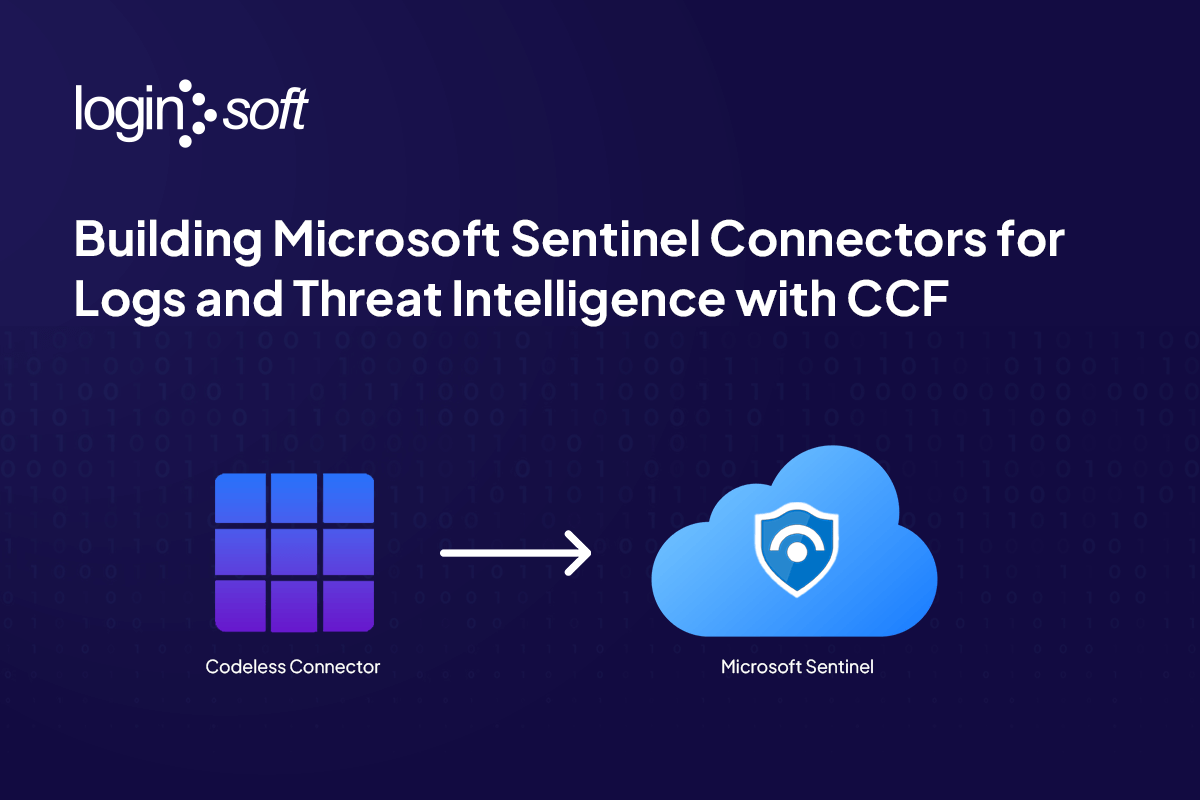Introduction: Why Edge Intelligence Matters Now
In today’s distributed cloud ecosystem, protecting the network edge is no longer optional, it’s mission critical. As organizations migrate applications, APIs, and microservices into global, cloud-native environments, the network edge becomes the first line of defense against a rapidly evolving threat landscape.
Azure Front Door (AFD) - Microsoft’s global, scalable entry point for web applications - already offers robust protection with built-in Web Application Firewall (WAF) and DDoS mitigation. However, attackers are getting smarter and faster. Static rules and reactive defense aren’t enough. To truly harden your perimeter, organizations must integrate real-time threat intelligence - dynamically feeding Azure WAF with up-to-date lists of malicious IP addresses to stop attackers before they reach your application backend.
Explores how to enhance Azure Front Door with Threat Intelligence integration, enabling proactive Azure WAF IP blocking that strengthens your edge, reduces backend strain, and safeguards business continuity.
Key Highlights:
- Proactively block malicious IPs at the edge using dynamic threat feeds integrated with Azure Front Door and WAF.
- Automate end-to-end protection with Azure Functions, Logic Apps, and APIs for continuous, real-time threat feed ingestion.
- Reduce attack surface and backend load, improving overall resilience, cost efficiency, and performance.
What is Threat Intelligence Integration in Azure Front Door?
Threat Intelligence integration means extending Azure Front Door’s built-in protection with live data from external sources that track known malicious entities across the internet, IPs, domains, and attack origins.
While Azure WAF already uses Microsoft Threat Intelligence, integrating third-party feeds (from providers such as Abuse IPDB, AlienVault OTX, or internal SOC data) expands your visibility and enables faster blocking of emerging threats.
This integration allows Azure WAF to act as a dynamic shield that updates continuously blocking botnets, phishing sites, brute-force sources, and malicious scanners in real time.
How to Block Malicious IPs at the Edge with Azure WAF
At a high level, the integration workflow includes five key components:
1. Threat Feed Ingestion
Use Azure Functions or Logic Apps to automatically pull IP data from your chosen threat intelligence feeds at set intervals (e.g., every 5–10 minutes). These feeds can be public, commercial, or internally curated from your Security Operations Center (SOC).
2. Filtering and Normalization
Raw IP data must be cleaned and filtered:
- Remove duplicates and invalid entries.
- Categorize IPs by threat type (botnet, phishing, brute-force) and severity level.
- Exclude VPNs, CDN edges, or trusted networks to prevent false positives.
Processed lists are typically stored in Azure Blob Storage or Cosmos DB, which supports deduplication and scalable lookups.
3. Automated WAF Rule Updates
Next, the processed IP list is used to update custom Azure WAF rules through Azure CLI or REST APIs.
These rules define “match conditions” that compare incoming requests’ RemoteAddr (client IP) against your malicious IP list. Any matches can trigger block, allow, or log-only actions depending on your configuration.
4. Logging and Monitoring
Using Azure Monitor and Microsoft Sentinel, organizations can track:
- Blocked or challenged requests
- Frequency and patterns of attacks
- False positives or benign anomalies
This telemetry forms the backbone of continuous tuning and incident correlation.
5. Scalability and Governance
Apply consistent policy enforcement using Azure Policy, Resource Tags, or ARM templates. This ensures WAF configurations stay synchronized across multiple Azure Front Door instances - critical for large enterprises with distributed apps or multi-region deployments.
Real-World Architecture: Bringing It All Together
A typical Azure Threat Intelligence integration architecture includes the following workflow:
- Threat Feed Sources – Trusted providers like Abuse IPDB, AlienVault OTX, or internal intelligence feeds.
- Azure Function or Logic App – Automates the ingestion, normalization, and deduplication process.
- Azure Storage (Blob/Cosmos DB) – Serves as the repository for curated IP lists.
- Azure CLI/REST API Automation – Pushes updated IPs into Azure WAF custom rules.
- Azure Front Door (WAF Policy) – Applies the IP-based block or challenge logic at the edge.
- Monitoring Layer – Azure Monitor, Log Analytics, and Microsoft Sentinel capture logs and insights for incident response.
Potential Benefits and Advantages
1. Real-Time Blocking at the Edge
Threat intelligence integration ensures that attacks are stopped at the earliest possible stage. Blocking traffic at Azure Front Door means malicious packets never consume backend bandwidth or CPU cycles.
2. Continuous, Automated Protection
When configured properly, Azure Functions or Logic Apps continuously update threat feeds - ensuring your protection remains aligned with the latest intelligence without manual intervention.
3. Reduced Backend Load and Cost
Every blocked request is one less resource drain. Many organizations report measurable reductions in computer costs, latency, and application errors.
4. Improved Compliance and Risk Posture
Blocking known malicious IPs aligns with compliance frameworks like PCI DSS, ISO 27001, and GDPR, where proactive threat mitigation is a control expectation.
5. Data-Driven Security Operations
Integrating Azure Monitor and Sentinel provides rich forensic data for incident response and threat hunting. Security teams can visualize attack trends and adapt their rule logic accordingly.
Considerations and Limitations
Despite its strengths, threat feed integration requires thoughtful implementation:
- Azure WAF Rule Limits
Azure WAF supports up to 600 IPs per custom rule and 100 rules per policy.
For large feeds, consider:- Aggregating IPs into CIDR ranges
- Prioritizing only high-severity threats
- Implementing rate limiting for traffic patterns that can’t be IP-blocked efficiently
- Feed Freshness vs. Cost
High-frequency polling (e.g., every 5 minutes) provides real-time protection but can raise Azure Function execution costs. Adjust polling intervals based on the criticality of your workload.
- Managing False Positives
Public VPNs or shared hosting IPs may occasionally appear malicious.
To mitigate this:- Maintain allowlists for trusted services and partners.
- Test updates in staging environments before pushing to production.
- Integration Complexity
Automation requires familiarity with Azure Functions, Logic Apps, CLI, APIs, and PowerShell scripting.
Poor error handling could lead to stale or missing WAF rules, reducing protection effectiveness.
- Client IP Visibility
Azure WAF evaluates traffic based on RemoteAddr.
Ensure that proxy layers or CDNs do not obscure the real client IP, or rules may misfire.
Best Practices and Implementation Tips
- Filter by Severity and Confidence
Only act on high-confidence indicators (e.g., IPs involved in brute-force or phishing).
Avoid over-blocking that might affect legitimate traffic.
- Use Allowlists and Exceptions
Protect your own systems, partners, and API consumers from accidental blocking.
- Deploy in Staging First
Always validate your rules and automation workflows in a non-production environment.
- Log Everything
Forward WAF logs to Microsoft Sentinel or a third-party SIEM for visibility, auditing, and continuous improvement.
- Automate End-to-End
Combine Azure Functions, Logic Apps, and Storage triggers for fully automated ingestion, updating, and alerting.
- Ensure Policy Consistency
Use Azure Policy or Infrastructure-as-Code templates to replicate rule sets across multiple WAF instances.
Is This Strategy Right for You?
If you use Azure Front Door to protect and deliver your web apps globally, adding Threat Intelligence for malicious IP blocking at the edge can take your security to the next level.
You should consider this approach if you:
- Run public-facing web apps, APIs, or portals with a global user base.
- See a rise in malicious traffic, bot attacks, or repeated IP abuse.
- Follow a Zero-Trust security model and want proactive defense, not just reactive cleanup.
- Need to meet compliance frameworks like PCI DSS or GDPR, common in finance, SaaS, or e-commerce.
This strategy works especially well for SaaS providers, financial platforms, and e-commerce businesses dealing with large user volumes or sensitive transactions. Integrating Threat Intelligence with Azure Front Door helps you block bad IPs at the edge, tighten Azure WAF policies, and reduce attack exposure — all while keeping performance high.
Loginsoft POV
At Loginsoft, we help organizations operationalize Threat Intelligence within Azure Front Door - enabling smarter, faster, and automated protection at the edge. Our experts integrate custom threat feeds, fine-tune Azure WAF rules, and ensure your security posture evolves with real-world threats.
Let’s build a proactive edge defense that works for your business - before threats reach your front door.
About Loginsoft
For over 20 years, leading companies in Telecom, Cybersecurity, Healthcare, Banking, New Media, and more have come to rely on Loginsoft as a trusted resource for technology talent. From startups, to product and enterprises rely on our services. Whether Onsite, Offsite, or Offshore, we deliver. With a track record of successful partnerships with leading technology companies globally, and specifically in the past 6 years with Cybersecurity product companies, Loginsoft offers a comprehensive range of security offerings, including Software Supply Chain, Vulnerability Management, Threat Intelligence, Cloud Security, Cybersecurity Platform Integrations, creating content packs for Cloud SIEM, Logs onboarding and more. Our commitment to innovation and expertise has positioned us as a trusted player in the cybersecurity space. Loginsoft continues to provide traditional IT services which include Software development & Support, QA automation, Data Science & AI, etc.
Expertise in Integrations with Threat Intelligence and Security Products: Built more than 250+ integrations with leading TIP, SIEM, SOAR, and Ticketing Platforms such as Cortex XSOAR, Anomali, ThreatQ, Splunk, IBM QRadar & Resilient, Microsoft Azure Sentinel, ServiceNow, Swimlane, Siemplify, MISP, Maltego, Cryptocurrency Digital Exchange Platforms, CISCO, Datadog, Symantec, Carbonblack, F5, Fortinet, and so on. Loginsoft is a partner with industry leading technology vendors Palo Alto, Splunk, Elastic, IBM Security, etc.
In addition, Loginsoft offers Research as a service: We're more than just experts in cybersecurity; we're your accredited in-house research team focused on unraveling the complexities of cybersecurity and future technologies. From Application Security to Threat Research, our seasoned professionals have cultivated expertise in every facet of the field. We've earned the trust of over 20 security platform companies, who count on our research and analysis to strengthen their cybersecurity solutions.
Interested to learn more? Let’s start a conversation.








